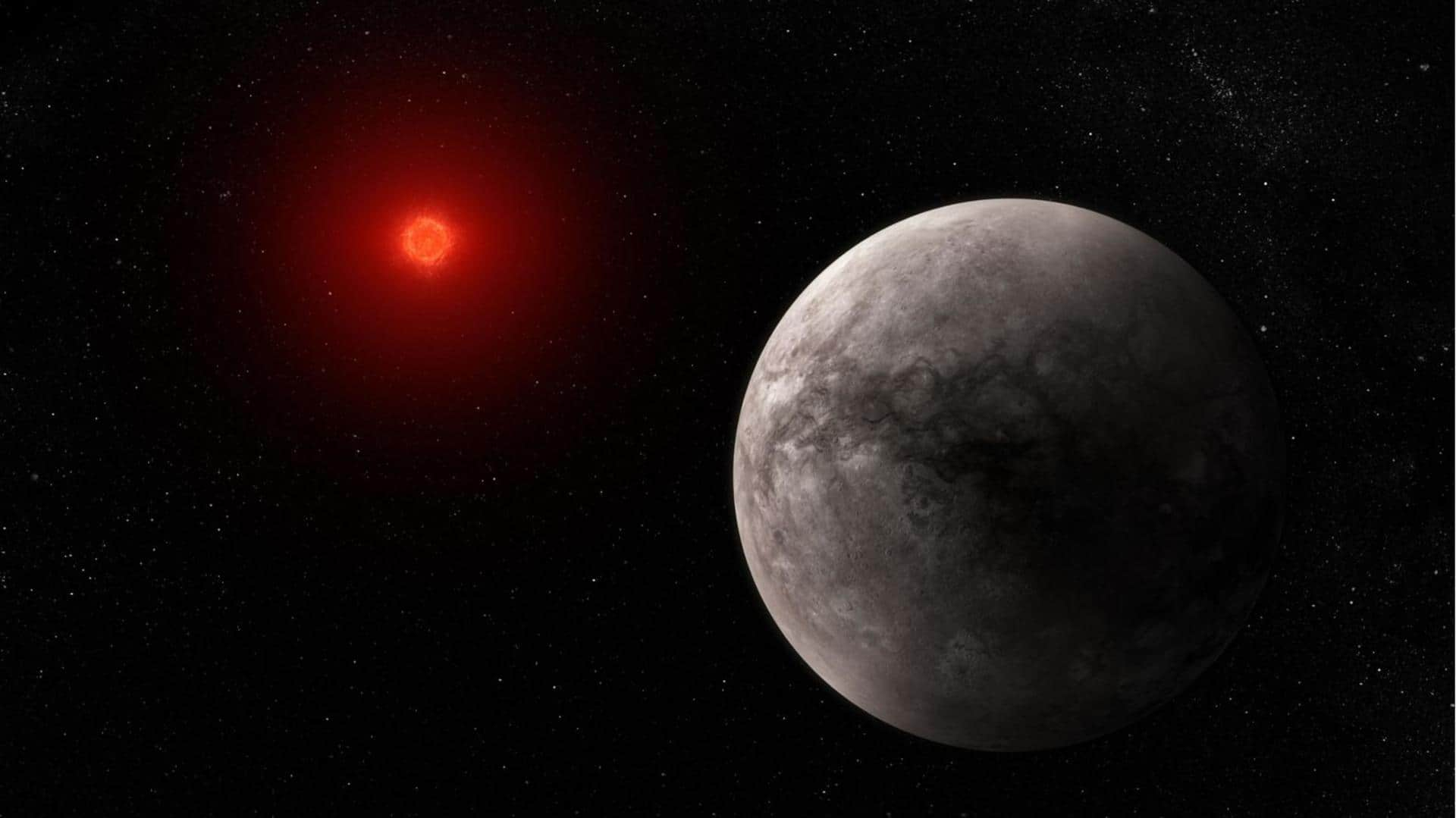
NASA's JWST detects exoplanet's temperature for first time: Know how
What's the story
Researchers have used the James Webb Space Telescope (JWST) to measure the temperature of a rocky Earth-like exoplanet called TRAPPIST-1 b.
What's notable is that this is the "first detection of any form of light emitted by an exoplanet" which is "as small and as cool as the rocky planets in our own solar system."
Here's more on how JWST achieved this breakthrough.
Context
Why does this story matter?
Exoplanets—the planets outside our solar system—have always intrigued astronomers because they could shed light on whether life exists anywhere else in the universe.
The JWST has been achieving one milestone after another, starting from giving us a glimpse of the deepest parts of the universe to now, proving its ability to study Earth-sized exoplanets in ways like never before.
Discovery
The investigation was carried out using Webb's onboard Mid-Infrared Instrument
The measurements were carried out using Webb's onboard equipment called the Mid-Infrared Instrument (MIRI), which NASA refers to as a "giant touch-free thermometer."
Webb's MIRI estimated the thermal emission from the exoplanet, which is the heat energy emitted in the form of infrared light.
The results revealed that the daytime temperature of the TRAPPIST-1 b exoplanet is a scorching 230 degrees Celsius.
Exoplanets
TRAPPIST-1 is among the best-studied planetary systems
TRAPPIST-1 is the most studied planetary system, aside from our solar system, according to NASA. It lies about 41 light-years from the Sun.
At the center of this planetary system is the TRAPPIST-1 star with seven orbiting exoplanets.
Interestingly, these seven exoplanets are similar in size and mass to the inner, rocky planets of our solar system.
Atmosphere
Previous telescopes did not have the sensitivity like Webb telescope
"No previous telescopes have had the sensitivity to measure such dim mid-infrared light," said Thomas Greene, the study's lead author.
The high temperature of TRAPPIST-1 b, the closest planet to the TRAPPIST-1 star, indicates that the exoplanet lacks an atmosphere.
Previous observations made by the Hubble and Spitzer space telescopes did not find signs of an atmosphere on any of the TRAPPIST-1 planets either.
Technique
The team used a technique called 'secondary eclipse photometry'
To measure the temperature of TRAPPIST-1 b, researchers used a technique called secondary eclipse photometry where Webb's MIRI measured the change in brightness from the system as the exoplanet moved behind its parent star.
By subtracting the brightness of the star from the combined brightness of the star and exoplanet, the team estimated the amount of infrared light that was emitted by the exoplanet.
Future
Additional secondary eclipse observations of TRAPPIST-1 b are underway
"Webb's detection of a secondary eclipse is itself a major milestone," said NASA in a blog post. Additional secondary eclipse observations of TRAPPIST-1 b are underway.
Ultimately, from these observations, researchers will be able to monitor the temperature differences of the exoplanet, between the day and night side, and confirm if the exoplanet has an atmosphere or not.
Information
"A really important step in the story of discovering exoplanets"
"This is the first time we can detect the emission from a rocky, temperate planet," said Pierre-Olivier Lagage, a co-author of the study. "It's a really important step in the story of discovering exoplanets."